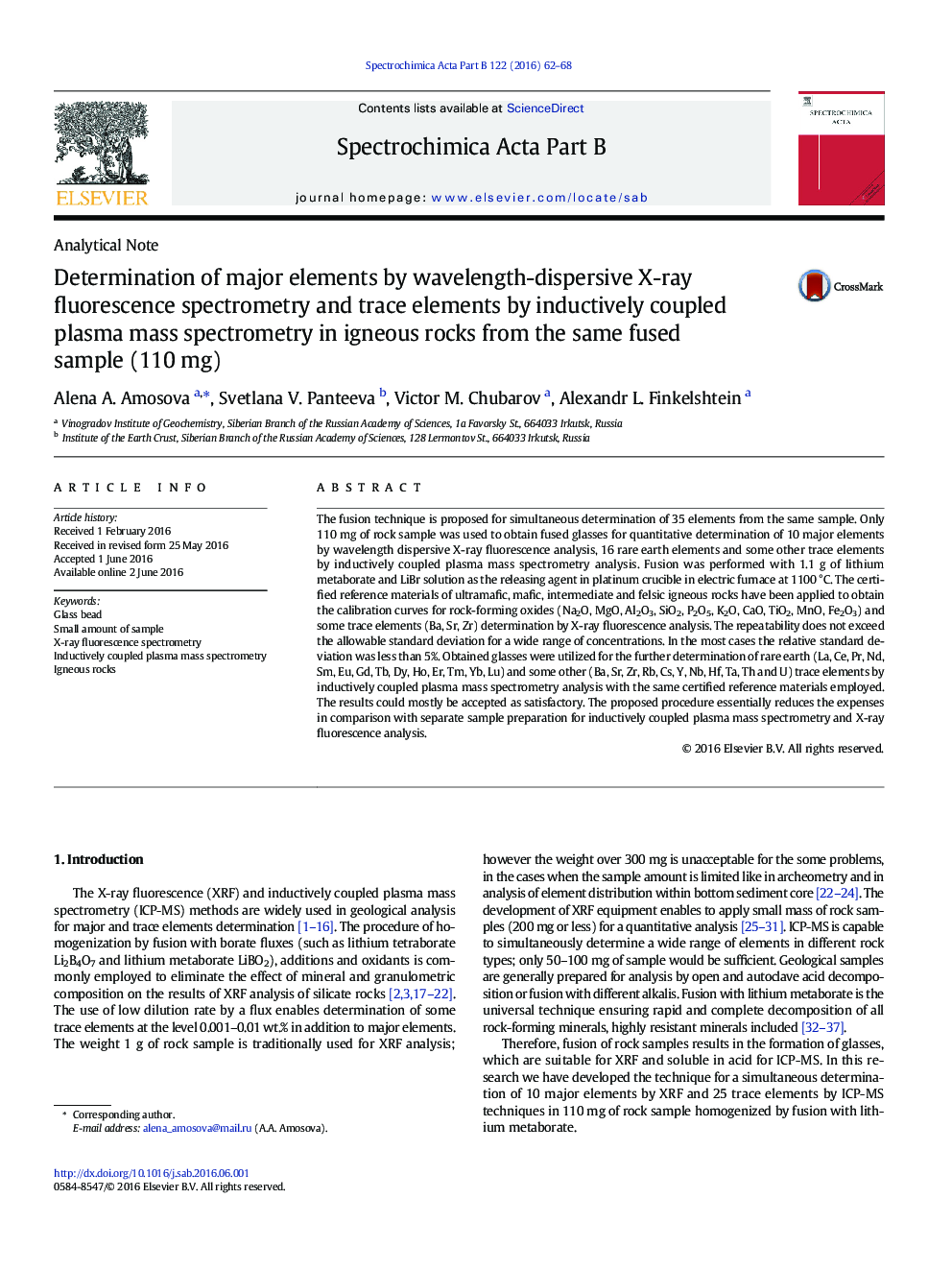| Article ID | Journal | Published Year | Pages | File Type |
|---|---|---|---|---|
| 1239573 | Spectrochimica Acta Part B: Atomic Spectroscopy | 2016 | 7 Pages |
•Only 110 mg of rock sample is enough for quantitative ICP-MS and XRF analysis.•The fusion with lithium metaborate was used for rock samples preparation.•Analytical results for 10 major and 25 trace elements accepted as satisfactory.
The fusion technique is proposed for simultaneous determination of 35 elements from the same sample. Only 110 mg of rock sample was used to obtain fused glasses for quantitative determination of 10 major elements by wavelength dispersive X-ray fluorescence analysis, 16 rare earth elements and some other trace elements by inductively coupled plasma mass spectrometry analysis. Fusion was performed with 1.1 g of lithium metaborate and LiBr solution as the releasing agent in platinum crucible in electric furnace at 1100 °C. The certified reference materials of ultramafic, mafic, intermediate and felsic igneous rocks have been applied to obtain the calibration curves for rock-forming oxides (Na2O, MgO, Al2O3, SiO2, P2O5, K2O, CaO, TiO2, MnO, Fe2O3) and some trace elements (Ba, Sr, Zr) determination by X-ray fluorescence analysis. The repeatability does not exceed the allowable standard deviation for a wide range of concentrations. In the most cases the relative standard deviation was less than 5%. Obtained glasses were utilized for the further determination of rare earth (La, Ce, Pr, Nd, Sm, Eu, Gd, Tb, Dy, Ho, Er, Tm, Yb, Lu) and some other (Ba, Sr, Zr, Rb, Cs, Y, Nb, Hf, Ta, Th and U) trace elements by inductively coupled plasma mass spectrometry analysis with the same certified reference materials employed. The results could mostly be accepted as satisfactory. The proposed procedure essentially reduces the expenses in comparison with separate sample preparation for inductively coupled plasma mass spectrometry and X-ray fluorescence analysis.
